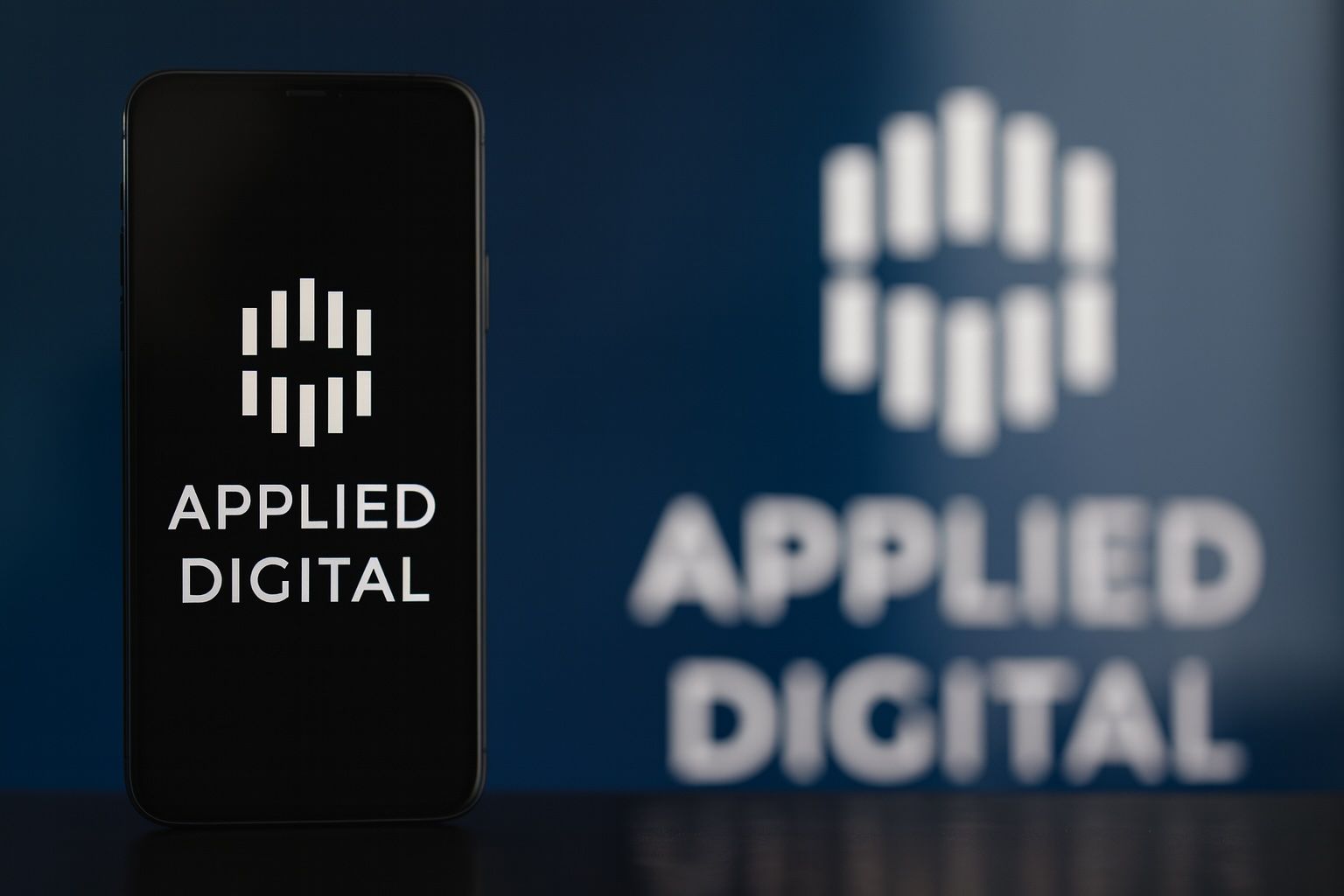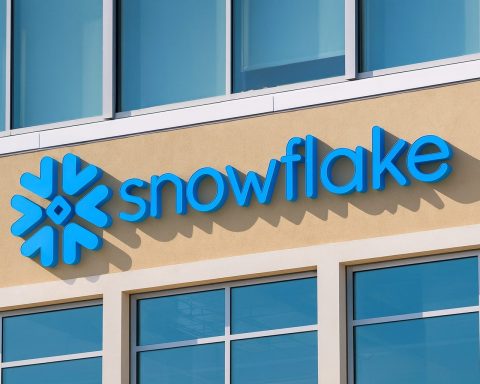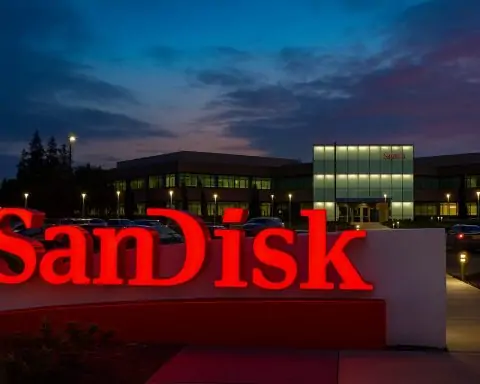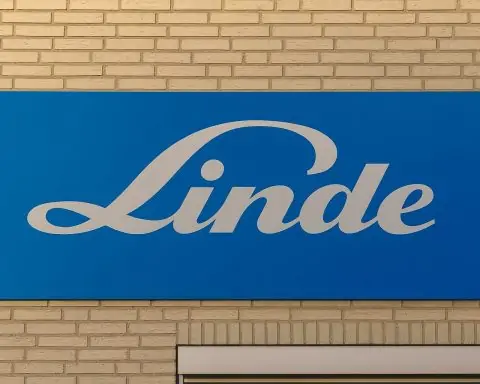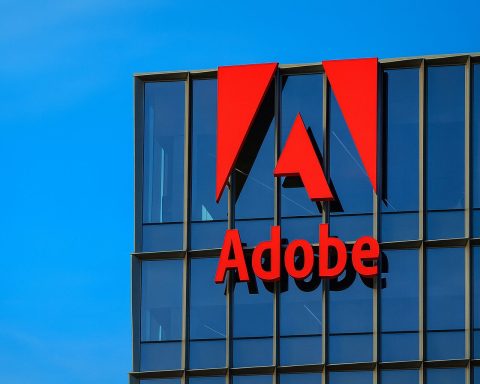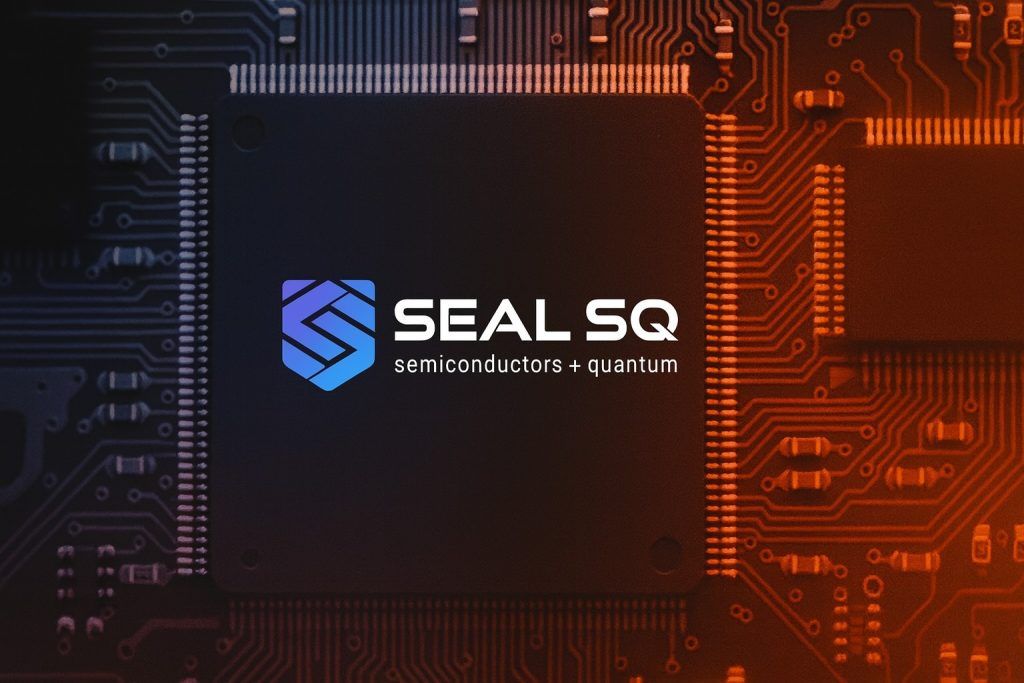- Surging Share Price: Applied Digital (NASDAQ: APLD) has been on a tear in 2025. The stock surged roughly 19% in early October, jumping from about $22 at September-end to the high-$20s by Oct 2 [1]. It hit an all-time closing high around $26.5 on Oct 3, capping a 200%+ year-to-date rally amid frenzied AI optimism [2]. As of Oct 9, APLD closed at $29.29 (up ~4.8% on the day) and is up roughly 280% year-to-date [3] [4] – although that spectacular gain still trails some peers (Iris Energy is up 500%+ YTD) [5].
- Earnings Beat & Revenue Soars: On Oct 9, Applied Digital reported fiscal Q1 2026 results that smashed expectations. Revenue jumped +84% year-over-year to $64.2 million, well above the ~$50 M consensus [6]. Adjusted EPS came in at –$0.03 (GAAP EPS –$0.11), better than the –$0.13 loss expected [7]. The company’s new AI HPC hosting segment contributed ~$26 M in revenue this quarter (from data center installations), while its legacy crypto-focused hosting business did $37.9 M (up 9% YoY) [8]. Despite higher costs (SG&A +165% YoY) squeezing margins [9] [10], APLD nearly broke even on an EBITDA basis and affirmed its long-term goal of ~$1 billion in annual operating income within five years [11].
- Big AI Deals (CoreWeave) & Pivot from Crypto: The company has successfully pivoted from crypto mining clients to AI cloud infrastructure. In late August, APLD finalized a 150 MW data center lease with CoreWeave, a fast-growing AI cloud provider, bringing CoreWeave’s total capacity leased at APLD’s North Dakota campus to 400 MW [12]. These 15-year contracts are worth ~$11 billion in future hosting revenue [13] – a staggering validation of Applied Digital’s shift from its “floundering” Bitcoin hosting roots to becoming an “AI Factory” provider [14] [15]. The flagship “Polaris Forge 1” campus can ultimately scale to 1 GW of IT load with proprietary waterless cooling tech and abundant cheap power [16], catering to the intense energy needs of AI supercomputing.
- Expansion & Funding Blitz: Applied Digital is aggressively expanding its data center footprint. On Oct 7, the company announced a strategic partnership with Macquarie Asset Management involving a $5.0 billion perpetual preferred equity facility to finance new “AI Factory” campuses [17]. The first $112.5 M from this facility was drawn to help complete Polaris Forge 1 [18]. A second campus “Polaris Forge 2” (280 MW) is already in progress – a $3 billion project slated to go live in 2026 and reach full capacity in 2027 [19]. Applied Digital has raised over $360 M in recent months via at-the-market stock sales, a $200 M preferred stock issuance, and other financings [20] to fund these build-outs. The infusion of capital is intended to minimize dilution and give APLD a clear runway: “Securing this funding at the asset level…gives us the capital to complete Polaris Forge 1 and provides a clear path to scale additional campuses,” said CEO Wes Cummins [21].
- AI Infrastructure Tailwinds: APLD is riding a wave of insatiable demand for AI data center capacity. Hyperscalers are pouring billions into AI – and data center space is becoming scarce, which is “a huge opportunity for Applied Digital,” as The Motley Fool noted [22] [23]. The company’s ability to secure power and deploy facilities rapidly in rural areas gives it an edge in serving AI customers [24]. Its anchor tenant CoreWeave (backed by NVIDIA) underscores APLD’s credibility in the AI realm [25]. At the same time, broader market excitement (the “AI gold rush”) has lifted all boats in this niche – so much so that APLD and similar “neo-cloud” stocks have seen extreme volatility (APLD’s 52-week range is $3 to $30+, beta > 6) [26].
- Analyst Sentiment & Forecasts: Wall Street coverage of Applied Digital has turned increasingly bullish amid its growth. Roughly a dozen analysts rate APLD a “Buy” or “Strong Buy”, citing its rapid AI data center expansion [27]. Price targets range widely – from the mid-teens up to around $30 at the high end [28]. (Notably, a $30 target was recently reiterated, implying further upside [29].) However, after the stock’s massive run-up above analysts’ average target (~$19–$26), some experts caution the valuation may be running ahead of fundamentals [30]. The current consensus 12-month target around $25 actually sits below the latest trading price [31] [32], reflecting potential downside if execution falters or if forecasts aren’t raised. Still, the consensus outlook remains positive – analysts broadly agree APLD is positioned to capitalize on the AI infrastructure boom, so long as it can deliver on its ambitious projects.
- Risks & Legal Matters: Investors should note that APLD’s story is not without controversy or risk. The company’s fortunes hinge heavily on a few major customers (CoreWeave will account for a large chunk of future revenue), posing concentration risk [33]. It also operates a capital-intensive model – continual fundraising and construction, which could dilute shareholders or strain finances if markets turn [34]. In mid-2023, short-sellerreports (by Wolfpack Research and others) accused Applied Digital of overhyping its AI pivot and questioned its ties to financier B. Riley [35] [36]. A class-action lawsuit was filed alleging APLD overstated its data center profitability and board independence during this period [37]. APLD’s management denies wrongdoing (calling the short report “inaccurate and misleading” [38]) and points to its recent AI mega-deals as vindication. Nevertheless, these legal proceedings are ongoing, and any setbacks – whether operational hiccups, cost overruns, or loss of a key client – could swiftly puncture the stock’s high-flying valuation [39].
Stock Price Surge and Recent Performance
Applied Digital’s stock has delivered eye-popping returns in 2025, emerging as one of the market’s hottest tech plays. Year-to-date, APLD shares have climbed roughly +280% [40], reflecting investors’ enthusiasm for companies tied to the AI infrastructure boom. The rally intensified in late September and early October: between Sept 30 and Oct 2 alone, APLD stock jumped about 19% (from ~$22 to over $27) on heavy trading volume [41]. This surge was fueled by buzz around new capacity leases and speculation that Applied might ink deals with a major cloud “hyperscaler” [42]. By Oct 3, the stock closed at $26.53, marking a record high and capping an astounding >200% rise just in the first nine months of the year [43].
This momentum carried into the week of the earnings report. On October 9, APLD rallied another 5%+ intraday ahead of its results, and finished the regular session at $29.29 [44]. Even after such gains, after-hours traders piled in following the earnings beat (more on that below), briefly pushing the stock above $32 (+10% AH) that evening [45]. It’s worth noting that APLD’s rally, while impressive, is not an isolated case – a cohort of similar stocks have been dubbed the “neo-cloud” or AI infrastructure plays. For instance, Iris Energy (IREN), another data-center firm pivoting to AI, saw its shares skyrocket over 515% this year [46]. This suggests a broader market trend: investors are eagerly hunting for the “picks and shovels” of the AI gold rush, and Applied Digital has been a prime beneficiary of that narrative.
However, such exponential gains have come with high volatility. Traders have grown accustomed to big swings – APLD has logged nearly 100 days of ±5% moves in the past year [47]. The stock’s 52-week range spans from penny-stock levels around $2.55 to recent highs near $30 [48]. This volatility reflects both the exuberance over Applied’s potential and the uncertainty inherent in its execution. As one market commentator put it, the stock’s rapid rise “does not fundamentally alter the market’s perception of the business” – it’s more a momentum surge on optimism and sector strength [49]. In other words, investors are pricing in a best-case scenario. That leaves little margin for error: any disappointment or risk-off shift in the AI theme could spark a sharp correction in APLD’s price, as seen in the occasional double-digit drops during 2023’s turbulent periods.
Recent News & Catalysts (Early October 2025)
The first weeks of October 2025 brought major developments for Applied Digital, coinciding with its earnings release and ongoing growth initiatives:
- Earnings Blowout (Q1 FY2026): On October 9, Applied Digital announced results for the quarter ended Aug 31, 2025, and the numbers wowed the market. Revenue soared 84% year-over-year to $64.2 million, handily beating analyst projections of ~$50 million [50]. This top-line jump was driven by new AI data-center contractskicking in (more below). The company reported a net loss of $27.8 million (–$0.11 per share), but even that was a smaller loss than Wall Street expected (consensus –$0.13) [51]. On an adjusted basis, the loss was only $0.03 per share [52]. In short, Applied Digital is not yet profitable, but it’s moving in the right direction by rapidly scaling revenue.Importantly, the earnings release detailed where growth is coming from: Applied’s new High-Performance Computing (HPC) Hosting segment – essentially its AI cloud infrastructure business – generated about $26.3 million in Q1 (from installation fees as it builds out customer capacity) [53]. Meanwhile, its legacy datacenter hosting (serving third-party crypto miners and general clients) contributed $37.9 million, a +9% YoY increase [54]. This indicates that while the old business (crypto-related hosting) is still material, the newAI-focused business is ramping up fast and already nearly equal in size within one quarter of landing big AI contracts. The gross margin for the quarter was modest (~13%), reflecting that much of the AI revenue so far was low-margin one-time installation work [55] [56]. Expenses also jumped – cost of revenue +144% and SG&A +165% YoY – as the company invested heavily in construction and personnel to support growth [57]. Despite that, Adjusted EBITDA was slightly positive ($0.5M) [58], implying the core business is nearing breakeven even as it scales.On the earnings conference call (and live blog coverage), management struck an optimistic tone. CEO Wes Cummins highlighted that Applied has now signed a third large lease (more on that later), which “validates our platform and execution, positioning Applied Digital as a trusted strategic partner to the world’s largest technology companies” [59]. He noted that with hyperscalers expected to invest ~$350 billion in AI this year, APLD aims to be the “picks and shovels of the intelligence era” [60]. The company did not give formal forward guidance (consistent with past practice), but did reiterate that as the Polaris Forge 1 project moves from installation phase to steady-state leasing, revenue will “increase significantly” sequentially in the coming quarters [61]. Indeed, the first 100MW of that AI facility is on track to go live by late 2025, which should start contributing high-margin recurring lease revenue (as opposed to one-time build fees) [62] [63]. This implied ramp-up gave investors more confidence that the blistering growth can continue into 2026.
- $5B Macquarie Partnership (Funding Boost): Just days before earnings, on Oct 7, Applied Digital announced a transformative financing deal with Macquarie Asset Management – one of the world’s largest infrastructure investors. Macquarie agreed to provide up to $5.0 billion in a perpetual preferred equity financing facility to fuel APLD’s data center expansion [64]. On Oct 7, Applied received the first $112.5 million draw from this facility [65]. These funds will go directly into completing the company’s flagship Polaris Forge 1 campus (100 MW building coming online in Q4 and 400 MW total contracted) [66]. According to Applied, this partnership dramatically reduces the need for the company to fund projects with its own equity – i.e. it can build new centers without constantly issuing dilutive new shares [67].Management’s commentary around the deal was telling. CEO Wes Cummins emphasized that asset-level fundingis crucial in such an “asset-heavy” business, as it “gives us the capital to complete Polaris Forge 1 and provides a clear path to scale additional campuses” [68]. In other words, with Macquarie’s deep pockets, Applied can accelerate growth without overstretching its balance sheet. Macquarie’s team was equally enthusiastic: “As demand for AI and HPC capacity continues to accelerate, we believe Applied Digital will distinguish itself as a valuable partner to hyperscale customers, with its differentiated portfolio of near-term power availability,” said Anton Moldan, a Senior Managing Director at Macquarie [69]. Coming from a top infrastructure investor, that’s a strong vote of confidence in APLD’s model.Additionally, the Q1 report disclosed other funding moves: Applied secured another $50M for the new campus (Polaris Forge 2) and raised $200M from a Series G preferred stock issuance during the quarter [70]. In total, after quarter-end the company had $362.5M of new financing proceeds lined up [71]. This cash infusion boosts liquidity (quarter-end cash was $114M, with $687M debt outstanding) [72] and will bankroll the construction of its massive projects in North Dakota. The bottom line is that lack of capital should not be a near-term constraint on APLD’s growth plans – a critical point, since scaling data centers to hundreds of MW is extremely capital-intensive.
- Other Notable Developments: Applied Digital’s October news flow wasn’t limited to earnings and financing. The company is progressing on its second major site, Polaris Forge 2 in Harwood, ND, which broke ground in August. Polaris Forge 2 is planned as a 280 MW campus (with room to expand further) expected to begin operating in 2026and fully build out by early 2027 [73]. APLD has hinted that it’s in advanced negotiations with a large “investment-grade” U.S. cloud provider to be the anchor tenant for this new campus [74]. If that materializes, it would repeat the playbook of Polaris 1 (where CoreWeave filled the capacity) and lock in another long-term revenue stream. Investors in early October were speculating about this potential hyperscaler deal, which likely contributed to the stock’s rally – optimism that a big-name client (perhaps an Alphabet/Google, Amazon, Oracle, etc.) could sign on [75] [76]. While no new contract of that sort was confirmed in the past few days, the rumors alone sparked a buying frenzy around Oct 1–2 [77]. Applied’s inclusion in some AI stock indices and portfolios (one report noted NVIDIA has an investment relationship with CoreWeave, indirectly linking APLD to NVIDIA’s AI ecosystem) also helped drive momentum [78] [79].
In summary, early October brought very positive news for Applied Digital – blockbuster earnings, a huge financing lifeline, and continued execution on big projects. These catalysts reinforced the market’s growth narrative for APLD and helped justify the stock’s recent run to new highs.
Financial Performance and Earnings Analysis
Even before the latest quarter, Applied Digital’s financial trajectory has been one of rapid growth paired with heavy investment. For the full FY2025 (year ended May 31, 2025), the company reported revenue of $144.2 million, a modest +6% increase from the prior year [80]. This tepid annual growth belies the inflection that was starting late in the fiscal year – indeed Q4 FY2025 revenue jumped 41% YoY as initial AI contracts began to ramp [81]. However, FY2025 also saw a large net loss of $161 million (–$0.80 per share) [82]. Much of that loss was due to huge depreciation, infrastructure development costs, and interest on project debt as APLD built out new data centers [83]. On an adjusted basis (excluding some one-time items and non-cash charges), the company’s net loss was around $12.5M for FY25 [84], and it even achieved a positive adjusted EBITDA of ~$19.6M [85]. This suggests that the core operations – excluding expansion costs – have started generating cash. Still, bottom-line profitability remains a distant goal; management has essentially told investors to expect losses in the near term while the company focuses on scaling up capacity and revenue [86] [87].
The Q1 FY2026 results (June–Aug 2025 quarter) highlight that scaling story in action. As noted, revenue blew past expectations at $64.2M (+84% YoY) [88], and the adjusted loss per share shrank to just $0.03 [89]. This is a remarkable improvement both year-over-year and sequentially (the previous quarter was ~$38M revenue with a –$0.12 EPS) [90]. The driver is clear: AI data center deals contributing new revenue streams. In fact, over 40% of Q1’s revenue came from the brand-new HPC (AI) hosting segment [91], which essentially did not exist a year ago. This includes payments from CoreWeave for the build-out of their dedicated infrastructure at Polaris Forge 1. Those installation revenues are low-margin (the costs are passed through, yielding only a small profit to APLD [92] [93]), but they pave the way for high-margin lease revenues once the data halls are up and running. Applied Digital indicated that lease billing for Polaris 1 will commence later in 2025 as equipment installation completes, at which point revenue should climb further and margins improve dramatically [94] [95]. Essentially, the company is front-loading a lot of expense (building out facilities for clients) for a future payoff of steady hosting fees spread over 10–15 years of contracts.
Meanwhile, the legacy business (traditional data center hosting, heavily weighted to crypto miners) appears to be stable or slightly growing: $37.9M in Q1, up 9% from the prior year [96]. Notably, crypto-related hosting still made up the majority of recognized revenue this quarter. This underscores that Applied Digital has not completely exited that market – it continues to serve clients running blockchain computations. However, management has de-emphasized this line, especially after the crypto downturn of 2022. They’ve repurposed some facilities for HPC and AI uses instead of pure crypto. The long-term vision is clearly that AI workloads will dominate APLD’s business, and crypto will become a smaller footnote. The recent financials support that shift: as new AI contracts ramp up, the crypto hosting segment will likely become less than half of revenue going forward.
From a balance sheet and cash flow perspective, Applied Digital’s expansion is stretching the company, but recent financings have provided relief. At the end of Q1, the company reported $114.1M in cash and $687.3M in debt [97]. Subsequently, it added over $360M in combined equity/preferred financing (Macquarie facility + preferred stock sale) [98], which significantly boosts available capital. The company’s capital expenditures are enormous – for example, free cash flow was –$82M in Q1 [99] – reflecting the construction of multiple large data centers simultaneously. Investors should expect negative free cash flow for the next few quarters as well, given the Polaris Forge 1 completion and Polaris Forge 2 groundbreaking. The key question is whether these investments yield proportional returns. With $11B in contracted revenue booked (from CoreWeave’s leases) and presumably more to come with new tenants, the lifetime value of these projects appears to far outweigh the upfront costs. Still, there is execution risk: APLD has to spend money now to make money later, and it must manage this process without running out of liquidity or over-leveraging. The partnership with Macquarie is a big positive in this regard, since it effectively outsources a chunk of the funding needs to a deep-pocketed partner.
Looking ahead, analysts forecast continued rapid growth for Applied Digital, albeit with ongoing losses in the near term. Prior to the Q1 beat, consensus estimates (per MarketBeat) were for ~$255M revenue in FY2026 (ending May ’26) and ~$489M in FY2027 [100]. Those numbers may be revised upward given the latest quarter. If achieved, that would mean roughly 3.4× revenue growth in two years. On earnings, analysts see losses shrinking but not yet turning into big profits: projections had FY2026 EPS around –$0.75 and FY2027 around –$0.34 [101]. Again, such forecasts will be moving targets as APLD’s revenue ramps and expenses level off. The company itself hasn’t guided on EPS, but it has articulated a goal of $1 billion in annual net operating income within 5 years [102]. That is an extremely ambitious target – essentially suggesting that by 2030, APLD could be generating roughly 10× its current annual revenue in profit. Achieving that would require flawless execution, continued demand, and likely more deals beyond CoreWeave. It’s a moonshot scenario that bulls believe is possible if APLD becomes a dominant player in outsourced AI infrastructure.
Business Model and Strategic Overview
Applied Digital’s business model centers on providing cutting-edge digital infrastructure at scale, tailored for high-performance computing (HPC) and AI workloads. In simpler terms, APLD builds and operates massive data center campuses – what it now dubs “AI Factories” – that offer power, cooling, and rack space for clients running intensive compute jobs (like AI model training or cryptocurrency mining). The company has two main operating segments:
- Data Center Hosting (the legacy segment): This involves hosting third-party computing hardware (historically, mostly Bitcoin mining rigs) in APLD’s facilities, providing them with cheap power and cooling. Clients pay for the service, and APLD earns hosting fees. This was the original core of Applied Digital’s business (formerly known as “Applied Blockchain” when crypto was the focus).
- HPC Hosting (the new segment): This caters to AI cloud customers and other HPC users, such as GPU-based computing for machine learning. Instead of short-term or small-scale arrangements, APLD is signing multi-year, large-scale leases with clients like CoreWeave. In some cases, APLD essentially builds dedicated data center capacity for one client’s needs (almost like a build-to-suit datacenter, financed by APLD and partners, then leased to the client).
The strategic pivot from the first model to the second is what has captured investors’ imagination. Crypto mining hostingcan be a fickle, boom-bust business – it depends on cryptocurrency prices and mining economics. Applied Digital saw this firsthand: when Bitcoin prices fell in 2022, mining activity slowed and many miners struggled to pay bills, affecting hosting demand. AI hosting, on the other hand, is seen as a more stable, long-term opportunity. The AI industry’s hunger for compute power is surging, and companies are willing to sign 15-year contracts for data center capacity, as evidenced by CoreWeave’s deals. These contracts are huge (billions in value) and lock in a steady revenue stream, something rarely seen in the volatile crypto space. By shifting focus, APLD is essentially transforming from a “crypto infrastructure” company to an “AI infrastructure” company.
A few key elements define Applied Digital’s strategy and competitive advantage in this space:
- Low-Cost, Scalable Facilities: APLD specifically chooses sites in regions with abundant cheap energy and land– for example, North Dakota, which offers low-cost electricity (often from wind or local power co-ops) and cool climates (reducing cooling costs). The Polaris Forge campus in ND is a prime example: it spans 900+ acres and leverages power from local utility cooperatives [103]. This ensures that APLD can offer ultra-low power rates to its clients, a critical factor since power is the biggest operating cost for data centers. The company also touts its proprietary cooling technology – a closed-loop, direct-to-chip waterless cooling system that delivers efficiency (target PUE of 1.18) without guzzling water [104]. Traditional large data centers often require millions of gallons of water for cooling; APLD’s design avoids that, a selling point in certain locations and for environmentally-conscious customers. This tech know-how and focus on efficiency allow Applied Digital to scale up quickly. In fact, management claims they can deploy 100MW of capacity faster than many incumbents, thanks to modular designs and experience in rapid builds [105].
- “Land and Expand” with Anchor Tenants: The CoreWeave deal(s) illustrate APLD’s approach of securing a large anchor tenant to de-risk a new project. At Polaris Forge 1, CoreWeave initially took 250MW, then expanded to the full 400MW available [106]. This meant the campus was fully leased even before it was finished – a greatposition for APLD to be in, as it assures a return on investment. Now, with Polaris Forge 2, APLD is aiming to repeat the trick: they have been in talks with an “investment-grade” hyperscaler (a very large, creditworthy tech/cloud company) to potentially lease a big portion of that 280MW campus [107]. If that comes through, APLD could lock in another decade-long revenue stream upfront. By partnering with customers on long-term leases, Applied Digital is moving towards a quasi-REIT model (real estate investment trust) but in a niche tech sector – they build the critical infrastructure and collect rents over time. This approach also creates high switching costs for clients (once your AI workloads are set up in APLD’s center, you’re likely to keep them there for continuity).
- Partnerships and Financing Strategy: APLD’s alliance with Macquarie is not just about money; it’s also strategic endorsement. Macquarie brings expertise as an owner/operator of large data center platforms globally [108]. Their involvement suggests confidence that Applied Digital’s projects are sound and that the demand is real. Moreover, by structuring the $5B as a preferred equity facility at the asset level, APLD ensures that common shareholders won’t be heavily diluted to fund these huge builds (at least for Polaris 1 and likely 2). This is a savvy financial strategy to handle growth – use project finance and partner capital, rather than issuing tons of new stock. Earlier in 2025, APLD did raise capital via more dilutive means (it sold ~$269M through at-the-market equity and issued some preferreds post-FY25) [109], and even filed a shelf for more share sales [110], which concerned some investors. The Macquarie deal alleviates a lot of those dilution worries by tapping outside capital in a less dilutive way. In essence, Applied is trying to have its cake and eat it too – rapidly grow assets while preserving equity value.
- Services and Customer Mix: Applied Digital initially made its name serving blockchain miners (its early facilities in Texas and North Dakota were filled with ASIC mining equipment). Those customers provided quick revenue but also could leave just as quickly if mining economics soured. Now, APLD’s marquee customers are in the AI/cloud sector – for example, CoreWeave is a well-funded AI cloud provider that itself serves end-users training AI models. There’s also mention of Stability AI as a prospective customer (it was named in the Wolfpack short report as a dubious claim, but Stability AI is indeed a real AI startup) [111]. The ideal end-state for APLD would be to host multiple hyperscalers or large AI firms across its campuses, diversifying its client base while keeping each on long contracts. The concentration risk today is notable: with essentially one big customer (CoreWeave) responsible for the $11B in contracted backlog, Applied is reliant on CoreWeave’s success and commitment [112]. If CoreWeave were to falter or scale back (say, their own business doesn’t grow as expected), it would directly hit APLD’s future prospects. That’s why landing another anchor (like a hyperscaler for PF2) is strategically important. It would validate APLD’s platform with a second major client and reduce the over-reliance on CoreWeave.
- Regulatory and Operational Considerations: Running data centers at this scale involves navigating local regulations (power contracts, environmental permits, etc.). Applied Digital appears to have proactively worked with local authorities – for instance, it emphasizes bringing economic benefits to underserved rural communities with its projects [113]. The company even won an award “Best Data Center in the Americas 2025” by Datacloud [114], highlighting its design and sustainability. That said, there are risks such as potential power grid constraints. Industry experts warn that power shortages could emerge as AI data centers proliferate [115]. APLD’s strategy to secure power agreements early (Polaris Forge 2’s power was secured via cooperatives ahead of time [116]) is meant to mitigate this. On the regulatory front, there isn’t a direct threat (like crypto mining bans were in some regions), since AI computing is not contentious in the same way. If anything, local governments often welcome data center investments. However, APLD must manage things like reliable energy usage (ensuring it doesn’t overstress local grids) and possibly environmental impact (e.g., backup generators, noise, etc., although these are standard issues).
In summary, Applied Digital’s business model is to build fast, build big, and rent out capacity long-term. It is positioning itself as a critical infrastructure provider for the AI era, much like Equinix or Digital Realty Trust have been for general internet infrastructure – but with a focus on specialized, high-density computing. The company’s recent execution (signing huge leases, getting funding, meeting build timelines) has strengthened the credibility of this model. If it can continue on this path, APLD could carve out a valuable niche as the go-to landlord for AI compute farms, especially for clients that don’t want (or can’t afford) to build their own data centers from scratch.
Analysts’ Forecasts and Expert Outlook
Wall Street analysts have largely jumped on the Applied Digital bandwagon in recent months, though they remain mindful of the risks. As of this report, there are around 11–12 analysts covering APLD, and the consensus rating is a strong “Buy.” TipRanks notes 8 Buy ratings, 1 Hold, and 0 Sells in the past 3 months [117]. Clearly, the sell-side sees considerable opportunity in APLD’s AI infrastructure pivot. Analysts often cite the company’s rapid revenue growth and contract wins as justification for bullishness. For instance, Roth Capital earlier in 2025 raised its price target on APLD after the CoreWeave deals, arguing that AI-related demand would drive significantly higher revenue than previously thought [118]. Many analysts explicitly compare APLD’s story to a modern-day “gold rush” for AI, in which APLD provides the shovels (data centers) [119].
Price targets, however, reveal a split between near-term valuation concerns and long-term optimism. According to various sources, analyst targets for APLD currently range from roughly $13 on the low end to $30 at the high end [120]. The average target is in the mid-$20s (e.g. ~$19–26 in different surveys) [121] [122]. Notably, the high end $30 target (from JMP Securities, among others) essentially matches the recent stock price, implying limited upside unless the target is raised [123]. In fact, with APLD hovering around $29-$32 recently, several analysts’ targets now sit below the market price, which effectively signals overvaluation relative to current fundamentals. For example, the average $26.19 target reported by TipRanks implies about 10% downside from the stock’s post-earnings level [124]. StockAnalysis likewise shows a ~$19.27 consensus target, 34% below the latest price, even as it labels the consensus rating a “Strong Buy” [125]. This seeming contradiction arises because the stock has run up so fast – analysts haven’t all updated their models yet, and those who have may be reluctant to chase the price too far above what they can justify with DCF models or peer comparisons.
Several expert commentators have weighed in on this dynamic. Simply Wall St, in an Oct 5 analysis, cautioned that even assuming aggressive growth (74% CAGR for revenue through 2028), APLD might be worth only around $21/share intrinsically – about 20% below early October trading levels [126]. They pointed out the company’s dilution risk (the shelf offering for $197M in new shares [127]) and the fact that continual capital raises could cap upside for current shareholders [128]. In plainer terms: APLD’s valuation is baking in a lot of future success, so any stumble could correct the price. That said, bulls argue that traditional valuation methods don’t fully capture the scarcity value of what APLD is building. As long as AI demand keeps outpacing supply of data centers, APLD’s assets could command premium pricing. This bullish view was echoed in The Motley Fool article titled “Think It’s Too Late to Buy Applied Digital Stock? Here’s 1 Reason Why the Rally May Continue”. It noted that “data center capacity could be increasingly difficult to come by in coming years, which is a huge opportunity for Applied Digital” [129] [130]. In other words, because it takes time and expertise to erect these AI mega-centers (and not many companies are doing what APLD does), Applied might enjoy a seller’s market for its capacity – enabling it to fill facilities quickly and perhaps even charge higher rates later on. This perspective suggests the stock’s rally could be justified if one believes APLD will keep winning deals and perhaps even exceed current contract values.
In terms of financial forecasts, most analysts are modeling continued high growth for the next few years. As mentioned, consensus sees revenue roughly tripling from FY25 to FY27 [131]. On earnings, profitability is expected to improve but APLD likely stays in loss or low-profit territory for a year or two more. Margins are a key area analysts are discussing. After The Information reported in early October that Oracle’s AI cloud GPU business had only ~16% gross margins, there was some worry that companies like Applied Digital might also face margin pressures in AI hosting [132]. However, many analysts (and APLD’s execs) countered that Oracle’s case is an early-stage scenario – margins often start low during initial deployment of new tech, then rise as utilization improves [133]. For APLD, the expectation is that gross margins will significantly expand once the transition to steady leasing occurs (since current revenues include low-margin build fees). Monitoring EBITDA margins in coming quarters will be important; analysts will want to see that as revenue scales, the fixed costs are absorbed and operating leverage kicks in.
On the qualitative side, analysts frequently mention that Applied Digital is turning into a “pick-and-shovel play” for the AI revolution [134]. Instead of picking which AI software company will succeed, you can invest in APLD which benefits from the overall rising investment in AI infrastructure (much like investing in a company that sold gear to gold miners in a gold rush). This narrative has been compelling, and sell-side notes often reiterate it. Some have even dubbed APLD and similar stocks as “AI data center REITs” or “AI landlords”, drawing parallels with real estate plays but in tech. JMP Securities, for example, reportedly set a Street-high $35 target on APLD around Oct 9, 2025 [135], expressing confidence that the company’s execution will justify an even larger market cap. It’s clear that sentiment is largely optimistic – yet nearly everyone acknowledges that execution risk is the elephant in the room. As one commentator put it, investors are “essentially betting that Applied Digital will execute flawlessly on its massive projects and win more mega-deals” – any hiccup like delays, cost overruns, or a client pullback “could trigger a sharp correction” in the stock [136].
In summary, analysts see big potential in APLD and are recommending the stock, but many have targets below the current price due to the swift rally. The general outlook is that APLD’s revenues will continue to explode higher in the next 1-2 years, with profitability following behind. Those bullish on the stock argue that we’re only in the early innings of an AI infrastructure super-cycle and that Applied Digital is one of the few pure-play ways to ride that trend. More cautious voices remind investors that growth doesn’t equal profit and that APLD needs to prove it can turn huge CapEx into sustainable, high-margin earnings. The upcoming quarters – as Polaris Forge 1 goes live and new deals (perhaps Polaris 2’s anchor tenant) are announced – will likely lead analysts to update their models and could either allay or amplify these valuation concerns.
Competitive Landscape and Peers
Applied Digital operates in a highly specialized niche at the intersection of cloud services and data center real estate. Understanding its competitive landscape requires looking at a few categories of peers:
- “Neo-Cloud” AI Infrastructure Peers: These are companies similar to APLD that have emerged to serve the booming demand for AI compute outside of the traditional big cloud providers. A prime example is Iris Energy (NASDAQ: IREN), originally a Bitcoin miner that, like APLD, is pivoting to GPU-based data centers for AI. Iris Energy’s stock has outperformed even APLD, up over 500% in 2025 [137]. IREN and APLD are often mentioned together as small-cap plays riding the AI wave. Both offer investors exposure to the build-out of AI data centers without directly being cloud service operators themselves. Other similar peers include Cipher Mining (CIFR) and HIVE Digital Technologies (HIVE), which have backgrounds in crypto mining but are exploring HPC hosting. Northern Data (a European firm) also operates large-scale HPC/crypto data centers and could be seen as a competitor on a global stage. These companies all compete in securing sites, power, and clients for high-density computing. At the moment, Applied Digital arguably has an edge thanks to its mega-deals (the ~$11B contracts) and its ability to tap capital (like Macquarie’s $5B facility) – not many peers have that scale of deal in hand. But it’s a dynamic space; for instance, if Iris Energy or others land a big AI tenant, competition for the next deal could heat up.
- Traditional Data Center Providers: Giants like Equinix (EQIX) and Digital Realty Trust (DLR) operate data centers worldwide, but historically they have focused on enterprise and cloud colocation (serving a broad mix of IT workloads). These REIT-like players are many times larger than APLD (Equinix’s market cap is over $60B, versus APLD’s ~$8B [138]). However, they are also increasingly targeting high-density computing. The difference is that an Equinix typically provides multi-tenant facilities in network hub locations, whereas APLD builds single-tenant hyper-scale capacity in remote locations purely for compute. In some ways, Applied Digital doesn’t directly compete with Equinix – in fact, a company like Equinix could be a customer or partner if they needed capacity or wanted to outsource some build. Where there is overlap is in attracting hyperscaler business: the big cloud companies (Amazon, Microsoft, Google, Oracle, etc.) traditionally either build their own data centers or lease wholesale space from providers like Digital Realty for rapid expansion. Now, with AI demands rising, even those giants might look for third-party help. Oracle’s recent collaboration with another startup (Nvidia-backed CoreWeave, the same APLD client) for GPU cloud capacity shows that the clouds are willing to partner. So, APLD in a sense is competing for the favor of hyperscalers against both in-house build teams and established colocation firms. It tries to win by offering faster deployment, lower cost (thanks to cheap power locations), and ready-to-go power capacity which might be constrained elsewhere.
- Cloud Service Providers / Hyperscalers: While not competitors in the selling-to-investors sense, the large cloud companies (Amazon AWS, Microsoft Azure, Google Cloud, Oracle Cloud) are the dominant forces in providing AI compute power. One might question: couldn’t Amazon or Microsoft just do what APLD does? Indeed, they have vast data center operations. The difference is one of focus and agility. Applied Digital is essentially saying: “We will build data centers for you (or your needs) where you might not have the time or ability to do so quickly.” For example, CoreWeave (a smaller cloud) chose to lease from APLD rather than build 400MW on its own – likely because APLD had the site, power, and expertise ready to go faster. The major clouds often plan their capacity years out; if AI demand suddenly jumps, they might seek external capacity. Oracle’s partnership with CoreWeave to host Nvidia chips (announced in 2023) is a case in point. If hyperscalers find value in outsourcing some capacity, APLD stands to benefit as a supplier/partner rather than a head-on competitor. On the other hand, if the clouds decide to invest tens of billions to build all needed AI datacenters in-house, that could limit the market available to APLD. So far, the demand seems to exceed what even the giants can supply, leaving room for specialist firms.
- Cryptocurrency Hosting Competitors: In the legacy side of its business, APLD used to compete with other crypto-mining infrastructure companies – e.g., Core Scientific (before bankruptcy), Compute North, Riot Platforms (which has its own mining facilities), etc. Many of those firms struggled when crypto winter hit. Applied Digital navigated that downturn and is now diversifying away from that crowd. This actually sets it apart: some crypto-focused peers have not transitioned to AI and remain at the mercy of Bitcoin economics. APLD’s forward-looking pivot might give it a first-mover advantage in repurposing infrastructure for AI. For example, Mawson Infrastructure and Hive Blockchain have talked about incorporating AI hosting, but APLD already has concrete deals and infrastructure in place. In essence, within the crypto-hosting world, Applied Digital is ahead in evolving its model.
One noteworthy “competitor” to mention is the client itself – for instance, CoreWeave is a privately-held competitor to the big clouds, but it’s also APLD’s customer. This duality means Applied’s fortunes are somewhat tied to CoreWeave’s success in the AI market. If CoreWeave grows (rumors are they’re prepping a blockbuster IPO [139]), that’s great for APLD as their landlord. If CoreWeave struggles to compete with bigger cloud providers, APLD might indirectly suffer if, say, CoreWeave doesn’t utilize all the capacity it leased. So, while not a competitor in selling datacenter space, CoreWeave’s competitive position in the AI compute provider market is relevant to Applied Digital’s outlook.
In summary, Applied Digital’s competitive landscape spans from other upstart infrastructure firms to the biggest tech companies on earth. The good news for APLD is that demand is so intense right now that there’s arguably room for multiple players to succeed – this isn’t a zero-sum game yet. The company has differentiated itself by moving fast and thinking big (securing 1+ GW of projects and marquee clients). Its stock performance versus peers like IREN suggests investors currently favor APLD in this space. However, the true test of competitive advantage will come over the next 1-2 years: can Applied continue to win deals (especially beyond CoreWeave), and can it deliver capacity on time while others catch up? If it can, it may establish a brand as the go-to specialist for AI datacenters, which could fend off larger competitors through expertise and first-mover scale. If it stumbles, however, there are plenty of players – big and small – who would be ready to step in to serve the AI demand.
Legal and Regulatory Developments
While Applied Digital’s story is largely about growth, it has also seen its share of legal and regulatory scrutiny – primarily stemming from its dramatic pivot and promotional narrative during 2023. In July 2023, short-seller Wolfpack Research publicly announced a short position in APLD and released a report that was highly critical of the company [140]. Wolfpack accused Applied Digital of being “an embarrassing and predictable stock promotion,” claiming that APLD had “pumped up its stock in May by claiming to pivot from a floundering business hosting bitcoin miners, to becoming a low-cost AI cloud service provider.” [141] [142]. This allegation essentially cast doubt on the legitimacy of APLD’s AI transition – insinuating it was more hype than reality. Wolfpack also questioned APLD’s governance, pointing out the heavy involvement of B. Riley Financial (a financier which was both a lender and a major shareholder) and alleging conflicts of interest (Wolfpack noted insiders at B. Riley owned ~48% of APLD and suggested they would “exit their position” once APLD’s “claims make no sense”) [143]. Additionally, they were skeptical of APLD’s touted AI customers, calling one major prospective client (Stability AI) “dubious” [144].
The immediate impact of the short report was a sharp drop in APLD’s stock – shares tumbled about 19% in one day on July 6, 2023, falling to around $7.26 [145]. Applied Digital quickly rejected the report’s claims, stating that the author never contacted the company and that the report contained “many inaccurate and misleading claims.” The company said it “strongly disagrees” with the conclusions and that “over time the business will speak for itself.” [146] This response essentially asked investors to look at the results in coming quarters (which, indeed, have been robust) as proof that the AI pivot is real.
Nevertheless, the allegations triggered broader repercussions. By August 2023, a class-action lawsuit was filed (in the N.D. of Texas) on behalf of shareholders who bought APLD between April 2022 and July 2023 [147]. The suit – and a parallel investigation by law firm Cohen Milstein – alleges that Applied Digital and its executives made false or misleading statements during that period concerning its business and internal controls [148] [149]. Specifically, the complaint claims APLD overstated the profitability of its datacenter hosting and the viability of its AI cloud transition, overstated the independence of its board (important for proper governance), and overstated its business model’s efficacy while failing to disclose proper governance issues [150]. Essentially, it’s accusing APLD of painting too rosy a picture and not being upfront about conflicts (like the B. Riley relationships) and the challenges in the new strategy. The class period overlaps with APLD’s IPO and afterward, suggesting investors feel misled since the company’s inception as a public stock.
As part of that narrative, the lawsuit references not just Wolfpack but also other short reports: The Bear Cave (another analyst who raised concerns) and Friendly Bear, which apparently published a negative report on July 26, 2023, causing another stock drop (~6%) [151]. By late July 2023, in fact, the stock had fallen to around $6.50 (as per Cohen Milstein’s note) [152], erasing a lot of early-year gains. This legal action is ongoing – as of Oct 2025, the suit has not been resolved publicly. Such suits can take time, possibly years, to either be dismissed, settled, or go to trial. The outcome is uncertain, but they typically seek damages for investors who felt the stock was inflated by misstatements.
From a regulatory standpoint, there hasn’t been any specific SEC enforcement action announced against Applied Digital. The scrutiny so far is coming from the private litigation side. However, the presence of a class action and investigations implies that regulators could also be keeping an eye on APLD’s disclosures. Applied Digital will need to be careful in its communications, especially given the promotional tone of some of its past press (the lawsuit implicitly criticizes how enthusiastically APLD announced its pivot and partnerships). Now that the company has real large contracts and is delivering revenue, the short-seller narrative has weakened – the stock’s huge rebound in 2025 suggests the market currently believes APLD’s story over the shorts. But legal processes will still play out in the background.
Another area of regulation that could impact APLD is environmental or energy usage regulations. Large data centers draw significant power; if there are changes in energy policy (for example, new taxes on heavy electricity users, or constraints for grid stability), that could affect operating costs. Some states or localities also consider incentives or restrictions for data centers (noise ordinances, heat byproduct usage, etc.). So far, North Dakota has been welcoming – even granting tax incentives to data center projects historically. There’s no indication of adverse regulatory moves there. On the contrary, APLD’s focus on renewable/efficient design (waterless cooling, using existing grid capacity) is likely aimed at preempting environmental objections.
In summary, the main legal cloud over APLD is the shareholder lawsuit stemming from 2023’s short-seller allegations. While not directly affecting day-to-day operations, it’s a reminder that APLD’s meteoric rise and promotion left some disgruntled investors in its wake. The company will have to continue proving, through results and transparency, that its AI pivot is genuine and sustainable. If it does, the lawsuit’s claims of exaggeration may be harder to stick. If it stumbles, however, those allegations could gain traction in court. Investors should keep an eye on any updates in that case, but at this point, it doesn’t appear to be hampering APLD’s ability to execute its strategy or raise capital (given Macquarie and others still partnered with them post-allegations).
Conclusion
Applied Digital has rapidly transformed itself from a niche crypto datacenter operator into a headline-grabbing AI infrastructure player. Its stock performance in 2025 – up nearly fourfold – reflects the market’s excitement about this transformation. The company has delivered on several key fronts: securing massive long-term contracts (400MW leased to CoreWeave worth $11B) [153], launching new mega-projects (Polaris Forge 2), and dramatically increasing its revenues. It has also shown savvy in funding its ambitions, bringing in a heavyweight partner (Macquarie) to backstop $5B for expansion [154].
Experts are now asking the pivotal question: can Applied Digital live up to the hype? The opportunities are enormous – a seemingly insatiable demand for AI computing capacity that outstrips current supply, creating a seller’s market for players like APLD [155]. The company’s early moves (land, power, cooling tech) put it in a favorable position to capture this demand. As one analyst noted, we are in a unique moment where “data center capacity could be increasingly difficult to come by…which is a huge opportunity for Applied Digital” [156]. In that light, it may indeed be not too latefor the rally to continue, provided APLD keeps executing.
However, investors should remain cognizant of the risks. Applied Digital’s valuation already assumes years of high growth and successful project execution. There’s little room for setbacks without a stock pullback. Execution risk – building facilities on time and budget – is non-trivial when you’re talking about hundreds of megawatts and cutting-edge technology. The reliance on a few big customers means concentration risk; APLD will want to diversify its client roster to avoid overdependence on any single partner [157]. The company’s history with promotional claims and short-seller critiques also serves as a caution: it operates under a higher level of scrutiny now, and must uphold strong governance and transparency to maintain investor trust.
In the coming months, watch for new contract announcements (does a hyperscaler sign on to Polaris Forge 2?), progress updates on construction, and any hints of profitability improvement as revenue flows from installation to recurring leases. Also observe the competitive moves – if other players start landing AI data center deals, APLD might not have this field to itself for long. As of late 2025, though, Applied Digital stands out as one of the most ambitious and fastest-growing contenders in the AI infrastructure arena. It has effectively harnessed the “AI gold rush” narrative to its advantage, and so far has backed it up with tangible deals and growth. If it continues on this trajectory, APLD could evolve from a speculative high-flyer into a mature, cash-generating infrastructure company at the heart of the AI revolution – essentially, a picks-and-shovels powerhouse for the new age of intelligence [158]. Only time (and execution) will tell, but for now, APLD remains a stock to watch in the AI space, with high rewards on the table commensurate with its high risk.
Sources: Recent company press releases, earnings reports, and expert commentary were used in compiling this report [159] [160] [161] [162], among others, to ensure an up-to-date and accurate analysis as of October 9, 2025.
References
1. ts2.tech, 2. ts2.tech, 3. stockanalysis.com, 4. 247wallst.com, 5. 247wallst.com, 6. www.tipranks.com, 7. www.tipranks.com, 8. www.tipranks.com, 9. www.stocktitan.net, 10. www.stocktitan.net, 11. www.tipranks.com, 12. ts2.tech, 13. ts2.tech, 14. www.reuters.com, 15. ts2.tech, 16. ts2.tech, 17. ir.applieddigital.com, 18. ir.applieddigital.com, 19. ts2.tech, 20. www.stocktitan.net, 21. ir.applieddigital.com, 22. ts2.tech, 23. ts2.tech, 24. ts2.tech, 25. ts2.tech, 26. ts2.tech, 27. ts2.tech, 28. ts2.tech, 29. ts2.tech, 30. ts2.tech, 31. www.tipranks.com, 32. stockanalysis.com, 33. ts2.tech, 34. ts2.tech, 35. www.reuters.com, 36. www.reuters.com, 37. www.cohenmilstein.com, 38. www.reuters.com, 39. ts2.tech, 40. 247wallst.com, 41. ts2.tech, 42. ts2.tech, 43. ts2.tech, 44. stockanalysis.com, 45. stockanalysis.com, 46. 247wallst.com, 47. prismmarketview.com, 48. ts2.tech, 49. prismmarketview.com, 50. www.tipranks.com, 51. www.tipranks.com, 52. www.stocktitan.net, 53. www.tipranks.com, 54. www.tipranks.com, 55. 247wallst.com, 56. 247wallst.com, 57. www.stocktitan.net, 58. www.stocktitan.net, 59. 247wallst.com, 60. 247wallst.com, 61. 247wallst.com, 62. 247wallst.com, 63. 247wallst.com, 64. ir.applieddigital.com, 65. ir.applieddigital.com, 66. ir.applieddigital.com, 67. ir.applieddigital.com, 68. ir.applieddigital.com, 69. ir.applieddigital.com, 70. www.stocktitan.net, 71. www.stocktitan.net, 72. www.stocktitan.net, 73. ts2.tech, 74. ts2.tech, 75. ts2.tech, 76. ts2.tech, 77. ts2.tech, 78. prismmarketview.com, 79. prismmarketview.com, 80. ts2.tech, 81. ts2.tech, 82. ts2.tech, 83. ts2.tech, 84. ts2.tech, 85. ts2.tech, 86. ts2.tech, 87. www.tipranks.com, 88. www.tipranks.com, 89. www.stocktitan.net, 90. ts2.tech, 91. www.tipranks.com, 92. 247wallst.com, 93. 247wallst.com, 94. 247wallst.com, 95. 247wallst.com, 96. www.tipranks.com, 97. www.stocktitan.net, 98. www.stocktitan.net, 99. 247wallst.com, 100. 247wallst.com, 101. 247wallst.com, 102. www.tipranks.com, 103. ts2.tech, 104. 247wallst.com, 105. ts2.tech, 106. ts2.tech, 107. ts2.tech, 108. ir.applieddigital.com, 109. ts2.tech, 110. ts2.tech, 111. www.reuters.com, 112. ts2.tech, 113. ir.applieddigital.com, 114. ir.applieddigital.com, 115. ts2.tech, 116. ts2.tech, 117. www.tipranks.com, 118. ts2.tech, 119. ts2.tech, 120. ts2.tech, 121. stockanalysis.com, 122. www.tipranks.com, 123. ts2.tech, 124. www.tipranks.com, 125. stockanalysis.com, 126. ts2.tech, 127. ts2.tech, 128. ts2.tech, 129. ts2.tech, 130. ts2.tech, 131. 247wallst.com, 132. 247wallst.com, 133. 247wallst.com, 134. 247wallst.com, 135. www.quiverquant.com, 136. ts2.tech, 137. 247wallst.com, 138. stockanalysis.com, 139. ts2.tech, 140. www.reuters.com, 141. www.reuters.com, 142. www.reuters.com, 143. www.reuters.com, 144. www.reuters.com, 145. www.reuters.com, 146. www.reuters.com, 147. www.cohenmilstein.com, 148. www.cohenmilstein.com, 149. www.cohenmilstein.com, 150. www.cohenmilstein.com, 151. www.cohenmilstein.com, 152. www.cohenmilstein.com, 153. ts2.tech, 154. ir.applieddigital.com, 155. ts2.tech, 156. ts2.tech, 157. ts2.tech, 158. 247wallst.com, 159. ir.applieddigital.com, 160. ts2.tech, 161. www.tipranks.com, 162. www.reuters.com
